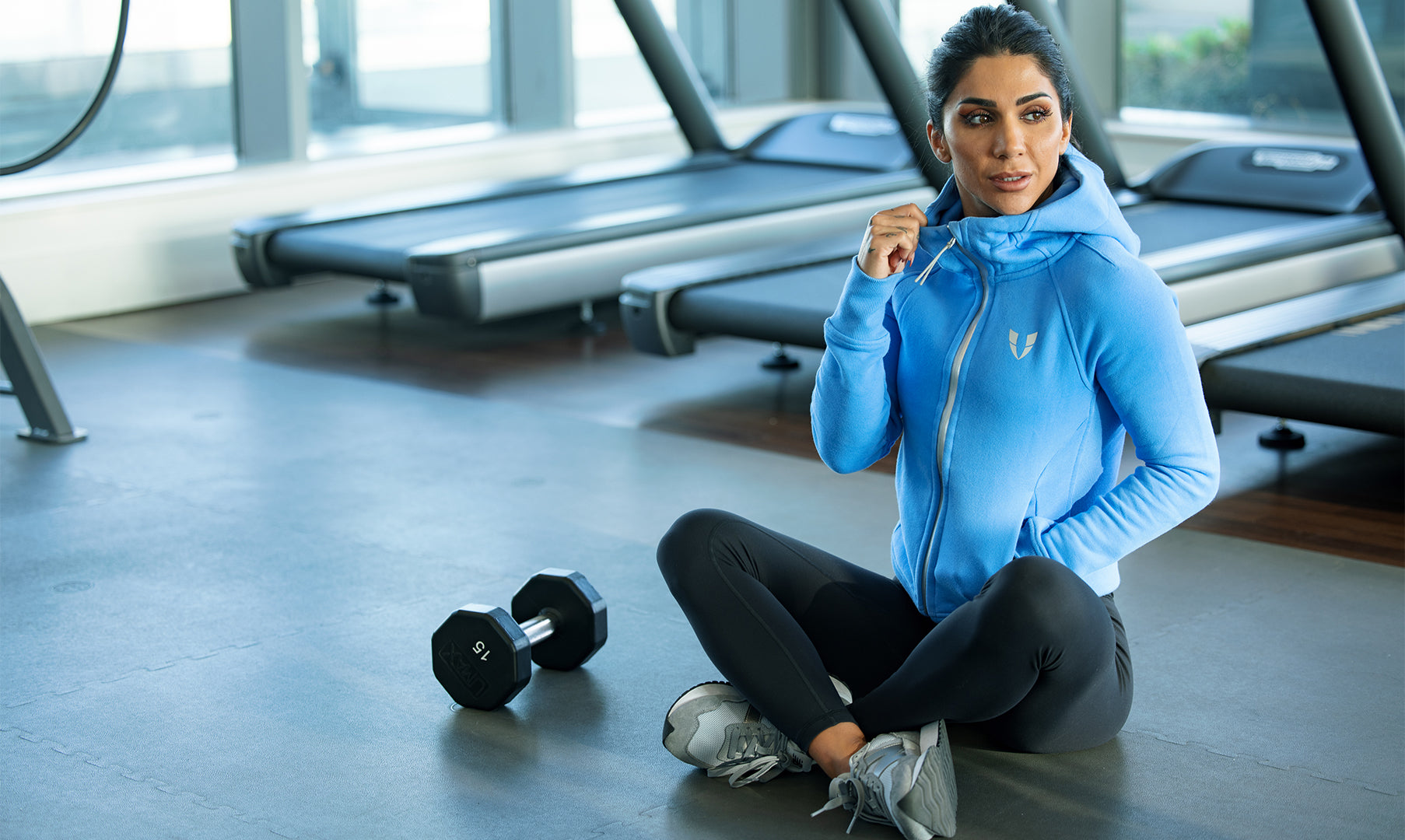
Luteal Phase Workout Guide: How to Sync Your Cycle for Better Health
Have you ever noticed how your energy and mood shift throughout your menstrual cycle? If so, you're not alone! The luteal phase is a time when hormonal changes can significantly impact how you feel and perform. As progesterone levels rise, many women experience dips in energy, mood swings, and other symptoms. That’s why it’s so important to adapt your workouts to this phase of your cycle.
In this article, we'll explore how syncing your exercise routine with the luteal phase can help you enhance your health and well-being, while also listening to your body’s needs and staying active without overdoing it.
Understanding the Luteal Phase
The luteal phase is the second half of your menstrual cycle, occurring after ovulation. It typically lasts around 14 days, though it can vary from person to person, ending on the first day of your next period. During this phase, the ruptured follicle transforms into the corpus luteum, which produces progesterone and estrogen. Progesterone helps thicken the uterine lining in preparation for a potential pregnancy. If fertilization does not occur, the corpus luteum is reabsorbed, leading to a drop in progesterone and estrogen levels. This hormonal decrease triggers the shedding of the uterine lining, resulting in your next menstrual period.
Symptoms of the Luteal Phase
As progesterone levels rise during the luteal phase, they can influence your energy and mood. Many women experience symptoms known as premenstrual syndrome (PMS). While these symptoms vary from person to person, common signs of the luteal phase may include:
Fatigue
Mood swings
Headaches
Breast tenderness or swelling
Irritability or anger
Changes in appetite
Bloating
Cramps
Recognizing these symptoms can help you better understand how your body reacts during this phase.

What is Cycle Syncing?
Cycle syncing is a lifestyle approach introduced by functional nutritionist Alisa Vitti. This concept encourages you to align your daily habits—such as diet, exercise, and sleep patterns—with the different phases of your menstrual cycle. By understanding how your hormones fluctuate, you can tailor these aspects of your life to optimize your well-being and performance. According to Vitti, cycle syncing can provide benefits like reduced stress, improved PMS management, more regular cycles, better metabolism, and increased focus.
During the luteal phase, rising progesterone and fluctuating estrogen can cause natural changes in energy, mood, and physical function. Customizing your workouts and lifestyle to these hormonal shifts can help maintain motivation, improve mood, and reduce discomfort. Over time, this leads to a more balanced and healthy lifestyle. By respecting your body’s natural rhythms, you’ll feel more aligned with your fitness goals and overall well-being.

Workouts for the Luteal Phase
Hormonal changes during the luteal phase can leave you feeling bloated, fatigued, and less energetic than usual. High-intensity workouts might add unnecessary stress to your body, making low-intensity exercises a better choice. These workouts help you stay active, improve your mood, and ease physical discomfort while being gentle on your joints.
1.Low-Impact Cardio
Engaging in activities like walking, swimming, or light cycling keeps your body moving without overwhelming it. These exercises promote better mood, circulation, and joint health.
2.Resistance Band Workouts
Using resistance bands is an effective way to maintain muscle tone and strength without putting too much strain on your body, which is especially important when you're feeling more fatigued than usual.
3.Yoga and Pilates
These forms of exercise promote relaxation, flexibility, and stress relief through breathwork and gentle movements. They can also help manage cramps and improve mental well-being.
4.Stretching
Incorporating regular stretching can alleviate muscle tension and enhance your range of motion, particularly helpful if you're experiencing stiffness or bloating.
5.Swimming
Water-based exercises like swimming are easy on the joints and can help reduce bloating or swelling, making them ideal for this phase.

6.Light-Intensity Barre Workouts
Barre combines elements of Pilates, yoga, and ballet, helping you strengthen your core and improve flexibility without stressing your body.
7.Meditation and Breathwork
Practicing guided meditation or breathing exercises can help reduce stress and regulate emotions, which can be beneficial if you experience mood swings during the luteal phase.
Create Your Own Luteal Phase Workout Routine
Designing a workout routine for the luteal phase involves understanding your body’s rhythm and adjusting your activities accordingly. The aim is to stay active while managing symptoms like bloating and fatigue, balancing movement with rest to prevent burnout. Here are some tips for building a personalized routine.
1.Mind Hormonal Changes
Hormones like progesterone and estrogen rise and fall at different points during this phase. Tracking these shifts—whether through a fitness app or journal—can help you adjust your workout intensity. Understanding when your energy dips optimizes performance and prevents pushing through on low-energy days, ensuring consistency in your fitness journey.
2.Schedule Rest Days
Listening to your body is crucial, so allow for rest days as needed, especially in the later days of the luteal phase. Rest is essential for recovery and can help prevent burnout. If you feel like moving, opt for active recovery activities such as stretching or a light walk.
3.Adjust Intensity
Early in the luteal phase, you might still have enough energy for moderate strength or cardio workouts. As your period approaches and fatigue sets in, reduce workout intensity—switch to lighter activities and prioritize recovery. This flexibility helps you maintain consistency without overexerting yourself.
4.Final Tips
Stay hydrated and eat a nutrient-rich diet to support recovery and manage bloating. Keep your routine flexible; if you're too exhausted one day, consider swapping a workout for a light walk or meditation. Listening to your body will help you stay motivated and consistent in the long run.

Relieve Symptoms in the Luteal Phase
- Balanced Nutrition: Maintaining balanced nutrition is crucial during the luteal phase. Start by prioritizing complex carbohydrates, such as whole grains, which can help reduce fatigue and provide sustained energy. Incorporate foods rich in magnesium, like leafy greens and nuts, to support muscle relaxation and alleviate bloating. Additionally, include omega-3 fatty acids—found in fatty fish and flaxseeds—which help reduce inflammation and promote emotional stability.
- Stay Hydrated: Drinking plenty of water can help reduce water retention and bloating, which are common during this phase. Aim for at least 8 glasses of water a day.
- Gentle Movement: Engaging in low-impact exercises can enhance circulation and mood while easing tension during the luteal phase. However, if your energy is low, prioritize rest over exercise. Always listen to your body; resting may be more beneficial than pushing through. If you're feeling particularly fatigued, focus on relaxation and recovery instead.
- Manage Stress: Consider engaging in activities such as meditation, deep breathing, and gentle stretching. These practices can effectively lower cortisol levels, helping to manage mood swings and reduce overall stress. Additionally, they promote relaxation and improve sleep quality, which is crucial for recovery during this phase.
The Bottom Line
Understanding the luteal phase and its hormonal shifts allows you to make informed choices about your workouts, nutrition, and self-care. By listening to your body and adapting your routine to your needs, you can alleviate symptoms, maintain energy levels, and support your overall well-being. Embracing this phase as a natural part of your cycle can lead to a more balanced, healthier lifestyle.






Leave a comment
This site is protected by hCaptcha and the hCaptcha Privacy Policy and Terms of Service apply.